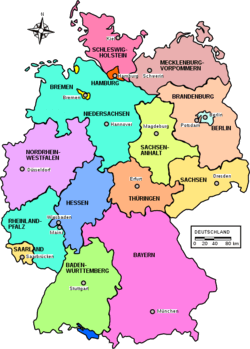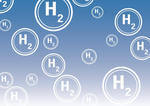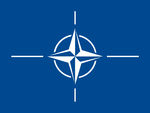Federal state comparison of renewable energy sources
Baden-Württemberg, Mecklenburg Western Pomerania, and Bavaria are the leading federal states in the field of renewable energy. That is the result from a comparison of the federal states which was compiled by the German Institute for Economic Research (DIW Berlin) and the Center for Solar Energy and Hydrogen Research Baden-Württemberg (Zentrum für Sonnenenergie- und Wasserstoff-Forschung Baden Württemberg, ZSW) on behalf of and in cooperation with the Renewable Energies Agency (Agentur für Erneuerbare Energien, AEE) for the fifth time. Using 59 indicators, the analysis assesses the federal states’ political efforts and achievements in using renewable energy sources as well as the related economic and technological changes in detail. Hesse, Berlin, and the Saarland were ranked the lowest.
Germany’s federal states are important players in the energy transition. Not only do they implement the energy goals of the federal government and the EU by enacting concrete local development, but they can also decisively advance or slow down the progress of the energy transition with their own goals, priorities, and programs. The federal state comparison of renewable energy sources by DIW Berlin, ZSW, and AEE illustrates the states’ political efforts and successes in using renewable energy as well as successes in terms of technological and economic structural changes using 59 individual indicators organized into four summary indicator groups. On the one hand, indicators cover topics such as each federal state's energy policy program, the share of renewable energy in energy consumption, and successes in expanding individual technologies such as wind power or solar energy. On the other hand, topics such as research efforts into renewable energy, support for the establishment of companies in the industry, and patent applications in this field are analyzed.
Federal states can learn from one another in different areas of action
“With this fifth federal state comparison of renewable energy sources, we can make developments in the energy revolution comparable at a federal level and thus rate who is especially successful and where there are still potentials for optimization,” explained Professor Claudia Kemfert, head of the Department of Energy, Transportation, Environment at DIW Berlin. “The current study shows new highs for many indicators, for example with regard to the share of renewable energy in the federal states and a progressive expansion of various technologies. Generally, most states are on the right path, even if they are developing at different paces,” said Kemfert.
Baden-Württemberg leading, Mecklenburg Western Pomerania second
Baden-Württemberg received the most points overall, putting the state in the lead for the first time. Second place went to Mecklenburg Western Pomerania. Both states have improved by one position compared to the last ranking in 2014. The previous leader, Bavaria, received the third highest number of points.
Professor Frithjof Staiß, managing director of ZSW, commented on the results: “The variety of indicators enables us to classify each federal state's strengths and weaknesses in detail. The top three states alone are clearly different: Baden-Württemberg received a lot of points for its political input on the use of renewable energy. Mecklenburg Western Pomerania is strong in the field of structural change, and Bavaria continues to show high levels of expansion in the area of renewables.”
“However, not everything is bad in the Saarland just because it’s in last place, and nor is Baden-Württemberg leading in all areas and able to sit back and take it easy,” continued Staiß. “There is still potential to improve, for example in terms of using wind energy potential or economic indicators. In the latter area, however, the Saarland scores points for developing revenues with renewable technologies. In the indicator for solar energy storage, as well, this overall low-ranking federal state is at the top.”
A need for action, even with previous successes
While progress has been made in most of the individual indicators in all federal states, there are also developmental regressions in different areas, such as in the share of renewables in district heating or the development of energy-related CO2 emissions, in various states. Philipp Vohrer, the managing director of AEE, comments: “The transformation of the system is far from over, even where excellent ratings can be established. This study clearly demonstrates where there are misdevelopments and where there is a pressing need for action. There are potentials for improvement everywhere - you can look where each federal state scored highly and learn from them. Further efforts are needed, especially in the federal states, to successfully implement the energy transition and achieve climate goals.”
- Source:
- DIW
- Author:
- Press Office
- Link:
- www.diw.de/...
- Keywords:
- Germany, federal states, renewable energy

























